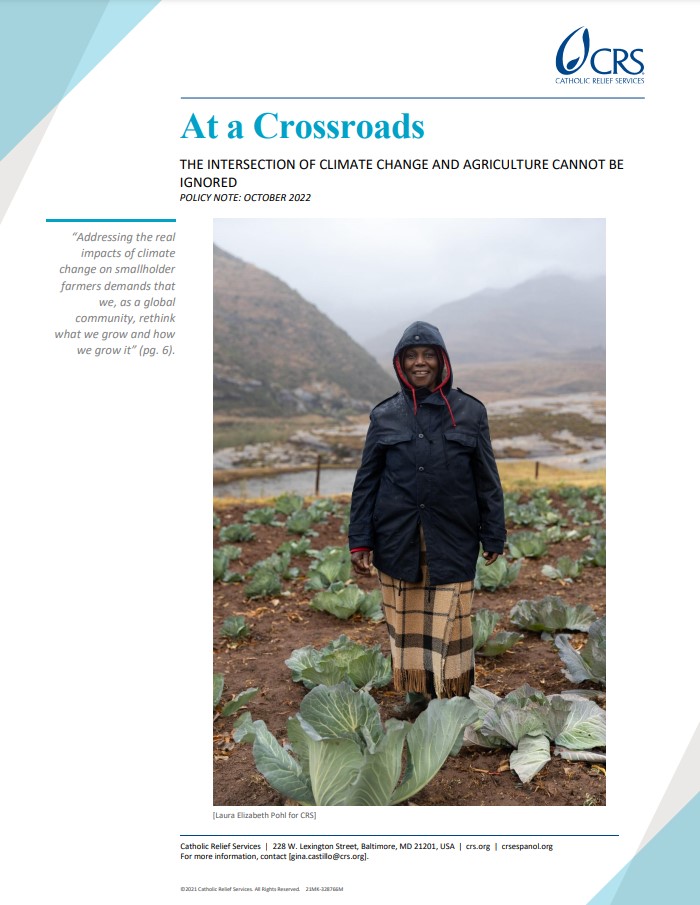
At a Crossroads: The Intersection of Climate Change and Agriculture
It is both possible and necessary to enhance our agricultural practices and investments to address the many interconnected impacts climate change has on food, nutrition security, and livelihoods. Small-scale farmers, who manage about 12 percent of the world’s agricultural land, will feel the effects the most. For these food producers, climate change can reinforce a vicious cycle of shocks, risks, and the poverty trap.
In Egypt, leaders will gather at the twenty-seventh UN Climate Change Conference (COP27) to reassert their commitment to reducing greenhouse gas emissions. At the same time, science is telling us that the window of opportunity is closing rapidly. At COP27, CRS is therefore appealing to leaders to take urgent action to:
- Reaffirm the centrality of agriculture for food and nutrition security, poverty reduction, and livelihood opportunities and ensure that the sector is resilient to climate change.
- Recognize that smallholder farmers and indigenous peoples need to be at the center of discussions on agriculture and sustainable natural resource management.
- Increase climate finance to support the agricultural sector anchored in the principles of subsidiarity. This would ensure that finance goes to farmers’ organizations and local organizations to support their agricultural priorities.
- Invest in soil health as it is the foundation of future viability of the agricultural sector and its ability to adapt to climate change.
As a humanitarian and development organization that works in over 100 countries with many farming communities, CRS and its partners are seeing the effects that extreme weather events related to climate change are having on crop yields, food security, and income. We also see the agricultural solutions that communities and local organizations are pioneering which require urgent financial support to achieve scale. COP27 needs to deliver for the millions of smallholder farmers who are on the frontlines of the climate crisis.
Published October 2022


